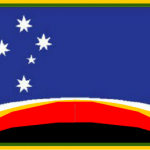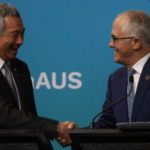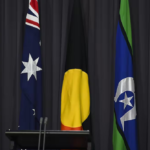Juggling competing Pacific narratives

Two narratives dominated geopolitical discussions of the Pacific islands in 2018 — that of the Blue Pacific and the Indo-Pacific.
The former was first articulated at the 2017 Pacific Islands Forum Leaders Meeting. It seeks to strengthen the assertion of Pacific island states’ autonomy and agency so that they can better harness the region’s strategic value on their own terms and chart their own development paths.
The latter is used by Australia, the United States, Japan and Indonesia to link the Pacific and Indian Oceans as their region of strategic interest. Pacific island states are wary that this approach poses the ‘risk of privileging Indo over the “Pacific”’ and of characterising Pacific island states as pawns in a geopolitical power struggle with China.
Driven by perceptions of mounting geopolitical competition in the Indo-Pacific, New Zealand sought to bolster its role in the Pacific islands by announcing its principles-based ‘Pacific reset’ in March 2018. This was followed by a more muscular approach in its July Strategic Defence Policy Statement. Australia also built on its ‘step up’ that it announced in 2017.
Although both Australia and New Zealand have tried to avoid explicitly linking their stepped-up engagement with China’s increased presence in the region, a report in April 2018 that China was in talks to build a military base in Vanuatu generated ‘great concern’ in Australia. Vanuatu’s Foreign Minister Ralph Regenvanu denied and criticised the report and the Chinese government described it as ‘ridiculous’.
That China’s spending in the Pacific islands has significantly increased is undeniable. There are claims that China will overtake Australia as the region’s largest donor. China committed US$4 billion for the 2017 calendar year compared to Australia’s US$815 million for the 2017–18 financial year.
Sixty-seven per cent of China’s aid comes as loans, rather than direct grants. In August 2018, Tongan Prime Minister Akilisi Pohiva called on China to write off the region’s debts due to the difficulty Pacific island states will have servicing them.
There are concerns that Pacific island states may succumb to ‘debtbook diplomacy’ and be forced to give China land or resources if they are unable to service these loans. But while debt distress is a problem, most debt is held domestically with only Tonga under debt distress from significant Chinese loans.
Despite being disproven, the narrative of ‘debt-trap diplomacy’ continues to be repeated in commentary on the region, exemplifying how traditional partners such as Australia, New Zealand and the United States look at the Pacific islands through the lens of geopolitical competition in the Indo-Pacific.
But Pacific island states are acting in increasingly assertive and creative ways to pursue the interests of the Blue Pacific. The debt-trap diplomacy narrative also incorrectly assumes that Pacific island states will share the geopolitical perspective of these traditional partners. Much of the region views Chinese finance as a positive development.
The Pacific Islands Forum Leaders Meeting in Nauru in September 2018 exemplified efforts by Pacific leaders to foreground the interests of the Blue Pacific. The Boe Declaration on Regional Security affirmed that climate change ‘remains the single greatest threat’ to the region and articulated an expanded concept of security that includes human security, humanitarian assistance and environmental security.
Chinese diplomatic assertiveness was evident at the APEC summit in Port Moresby in November 2018. President Xi Jinping visited the leaders of the eight Pacific island states that recognise China. Several signed renewed strategic partnership agreements with China, and Tonga and Vanuatu joined Papua New Guinea (PNG), Fiji and Samoa as signatories to China’s Belt and Road Initiative.
But two major announcements stole China’s thunder at APEC. Australia, New Zealand, the United States and Japan agreed to bring electrification to 70 per cent of the PNG population. Australia and the United States will also partner with PNG to develop a joint naval base on Manus Island.
Sitting behind these geopolitical machinations were significant domestic developments. The first was the referendum on New Caledonia’s political future on 4 November 2018. The result (56.4 per cent rejected independence) was much closer than most commentators had predicted. The outcome has encouraged independence activists from the Kanak and Socialist National Liberation Front, with leader Jean-Raymond Postic describing it as a ‘semi-victory’. It also suggests that the next two referenda, scheduled for 2020 and 2022, may be close — particularly as demographic change could increase the size of the Kanak population eligible to vote.
The second major development was the Fiji general election held on 14 November 2018. This also delivered a closer result than predicted. In 2014 Frank Bainimarama’s Fiji First party won by a landslide, securing nearly 60 per cent of the vote. In 2018 Fiji First won again, but with only 50.02 per cent of the vote.
2019 is likely to be an equally busy year for the Pacific islands. Another referendum is scheduled, this time on the political future of PNG’s Bougainville region. There is another key general election too, this time in the Solomon Islands. The Solomon Islands recognises Taiwan and competition with China for influence over local politicians is said to be affecting election preparations.
Competition for influence across the region among external powers is unlikely to abate. The challenge for 2019 is to ensure that the narratives of the Blue Pacific and the Indo-Pacific do not talk past each other. The Pacific islands must be brought into conversations about the geopolitics of their own region.
This article was published by the East Asia Forum.
Joanne Wallis is a senior lecturer at the Strategic and Defence Studies Centre at the Australian National University and the author of Pacific power? Australia’s strategy in the Pacific Islands.













